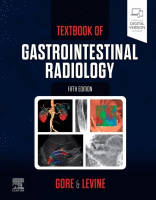Physical Address
304 North Cardinal St.
Dorchester Center, MA 02124

Clinical Considerations Crohn’s disease is an idiopathic inflammatory disease that can affect any part of the gastrointestinal (GI) tract from the mouth to the anus. Patients with this disease have a genetic predilection to an abnormal immunologic response to environmental…

Small bowel radiology has undergone dramatic changes in the past two decades. Despite recent advances in small bowel endoscopy and video capsule technology, radiologic imaging remains an important means of evaluating patients with suspected or established small bowel disease. Cross-sectional…

Computed Tomography Enterography: How It Differs From Routine Abdominal Computed Tomography Computed tomography enterography (CTE) reflects individualization of the abdominal pelvic CT technique for patients with small bowel disorders. CTE provides visualization of the small bowel lumen, wall, and perienteric…

Normal Small Intestine The small intestine is extremely tortuous, beginning at the pylorus and extending about 11 feet in the living human from the pylorus to the ileocecal valve. Intestinal length is extremely variable, depending on neuromuscular tone and vascular…

Gastroduodenal surgery is often performed for severe peptic ulcer disease (PUD), benign or malignant neoplasms, and obesity. Radiologic evaluation of the postoperative stomach and duodenum requires an understanding of the surgery performed, expected postoperative appearances, and potential complications. During the…

Gastric Varices Pathophysiology Portal Hypertension The gastric fundus is normally drained by numerous short gastric veins that anastomose distally with the splenic vein and proximally with the coronary vein and venous channels surrounding the distal esophagus. The short gastric veins…

Metastases Gastric and duodenal metastases are found at autopsy in less than 2% of patients who die of carcinoma. Most of them are blood-borne metastases, but the stomach and duodenum are also involved by lymphatic spread or by direct extension…

Gastric Carcinoma EPIDEMIOLOGY Gastric carcinoma has striking geographic variations, with the highest reported incidence in Japan. However, Japanese who migrate to the United States have a significantly lower incidence of gastric cancer than those living in Japan, so other factors…

Between 85% and 90% of neoplasms in the stomach and duodenum are benign. About 50% are mucosal lesions and 50% are submucosal. Most benign neoplasms are discovered fortuitously on barium studies or endoscopy, but large or ulcerated tumors may cause…

Erosive Gastritis Erosions are defined histologically as epithelial defects that do not penetrate beyond the muscularis mucosae. Although gastric erosions are rarely diagnosed on single-contrast upper gastrointestinal (GI) studies, they are detected on double-contrast studies in 1% to 20% of…